Much of the past year has been dominated by a discussion labelled Web3
What is Web3? Define Web3. What is the killer app for Web3? Give me a use case for Web3
As I say. There has been a lot of discussion. A lot of posturing. But very little evidence to suggest Web3 is the next uber tech wave
So let's examine this question by putting it in historical perspective
We begin with a definition. First the question: What is the web?
Now the answer: It's a global database
and what do you do with a database?
You search it and then scroll through the results
This then is history of the web
The UI may have shrunk but essentially the UX is search and you will find
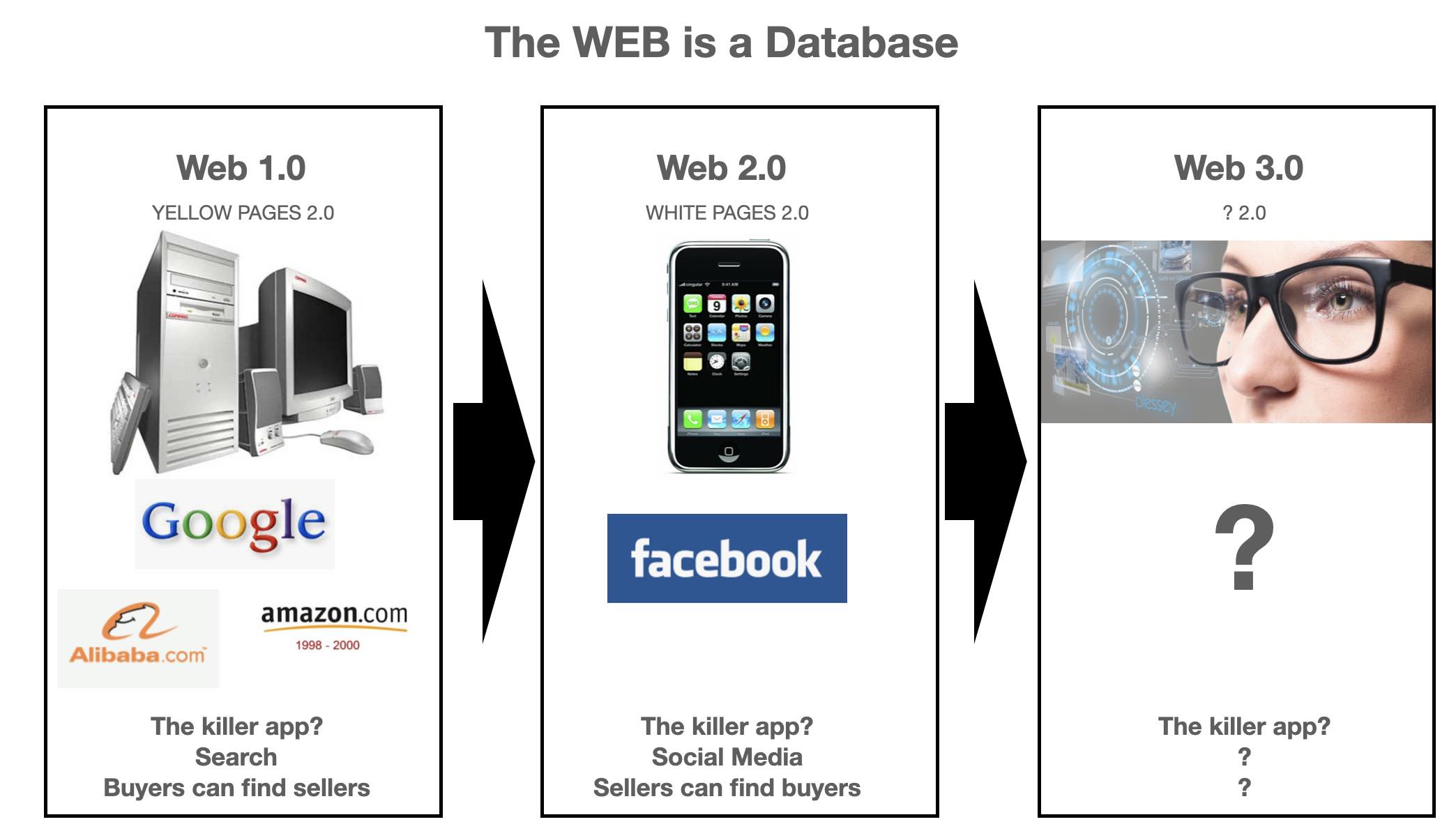
And, in a world of Web3, this leaves us two questions
What device will we be using to search with and what will we search for?
The history of the web suggests people will search for products and services. Basically they will search for solutions
and this raises the question: What is the gap in the web 2.0 experience that Web3 can possibly fill?
If Web 1.0 gave us eCommerce, and Web 2.0 gave us mCommerce, what type of commerce does Web3 offer the world?
In this post I will attempt to briefly outline why I think the killer app or use case for Web3 is a platform for creating and managing digital sales channels beyond our current addiction to the sugar shot economy of Web 2.0
We'll begin with the question why?
Why change the way we do commerce on the web?
mCommerce as we know it is fragile
There are too many moving parts
Too many rent seekers operating aging technology stacks that get in the way of buyers and sellers doing business
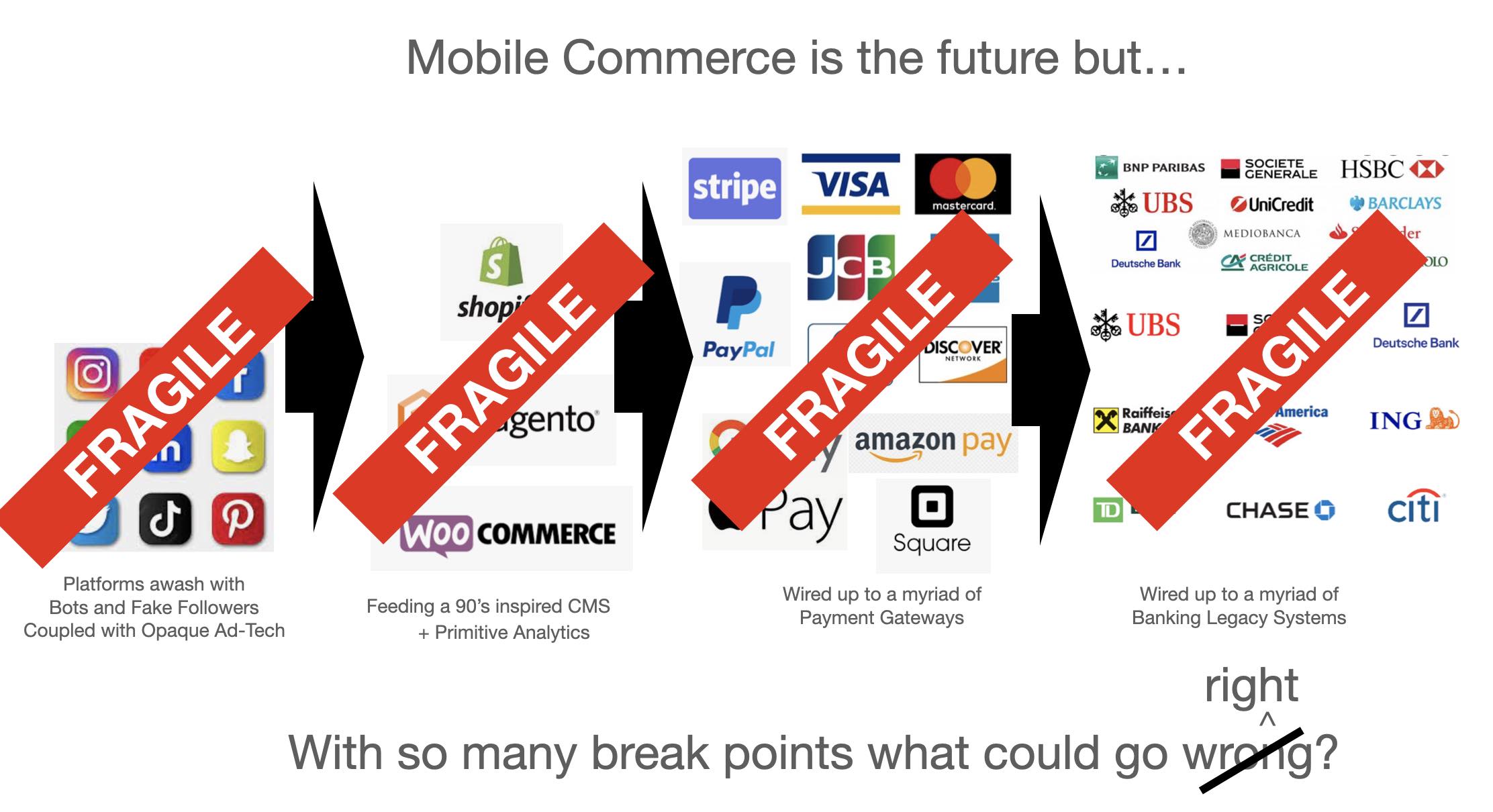
and this broken sales funnel is the Web3 opportunity
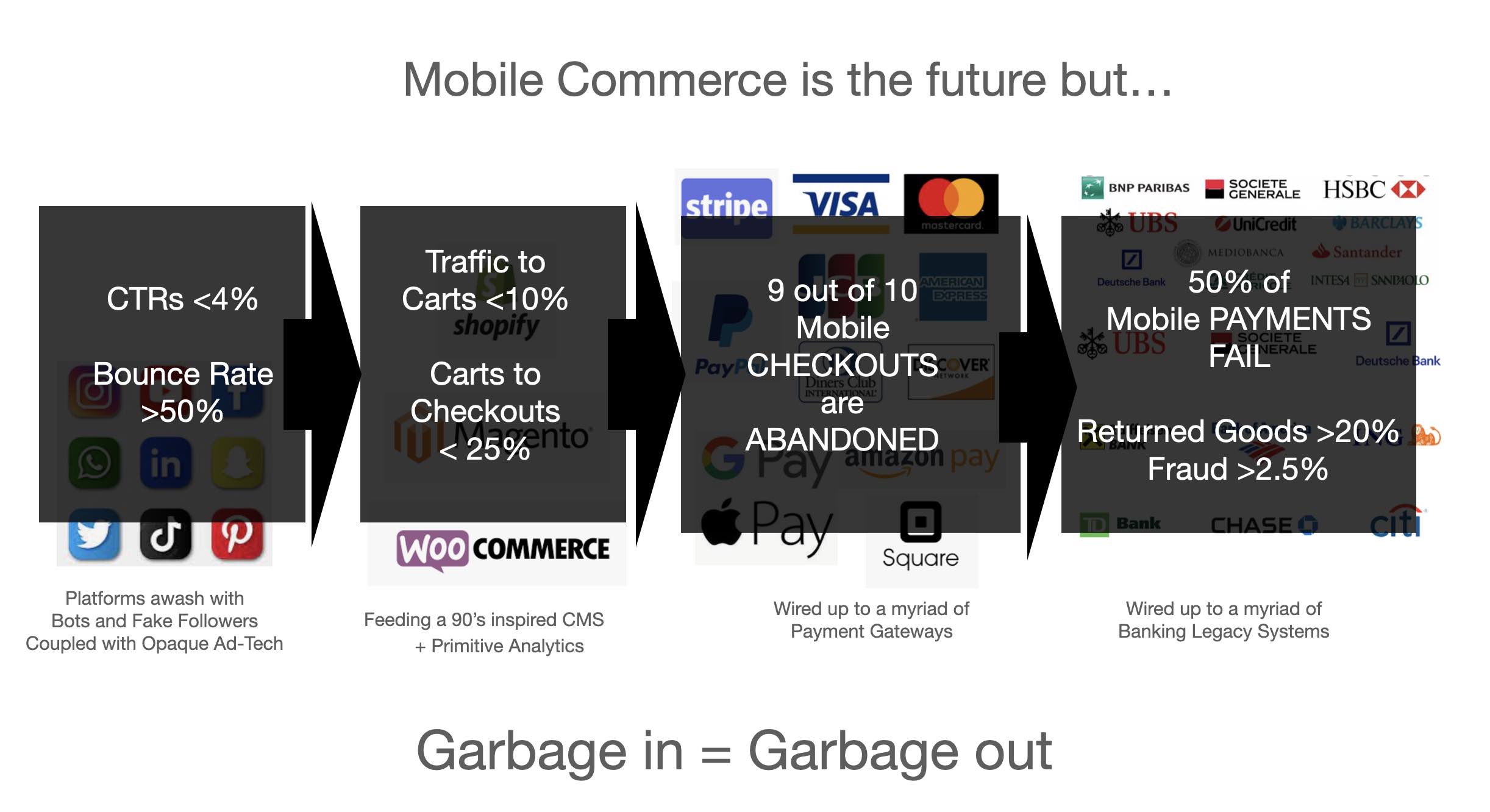
and make no mistake it is a massive opportunity for the right players and the smartest investors
Everybody talks about how big eCommerce is today
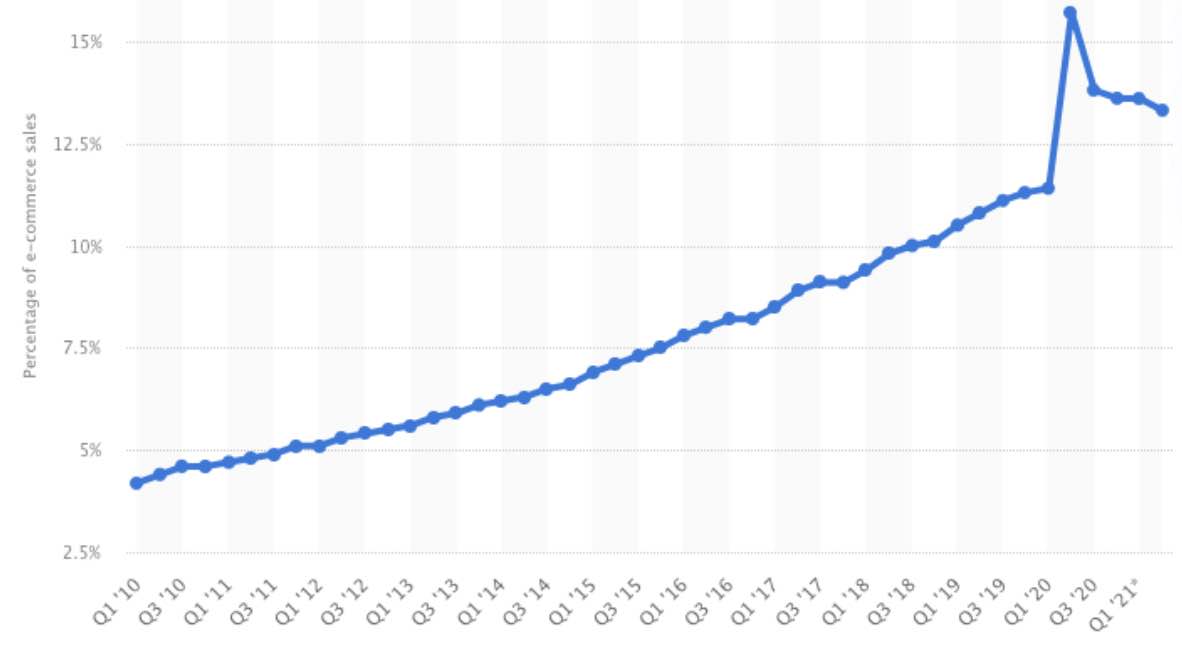
Nobody talks about the business that is lost everyday because eCommerce doesn't work for buyers or sellers
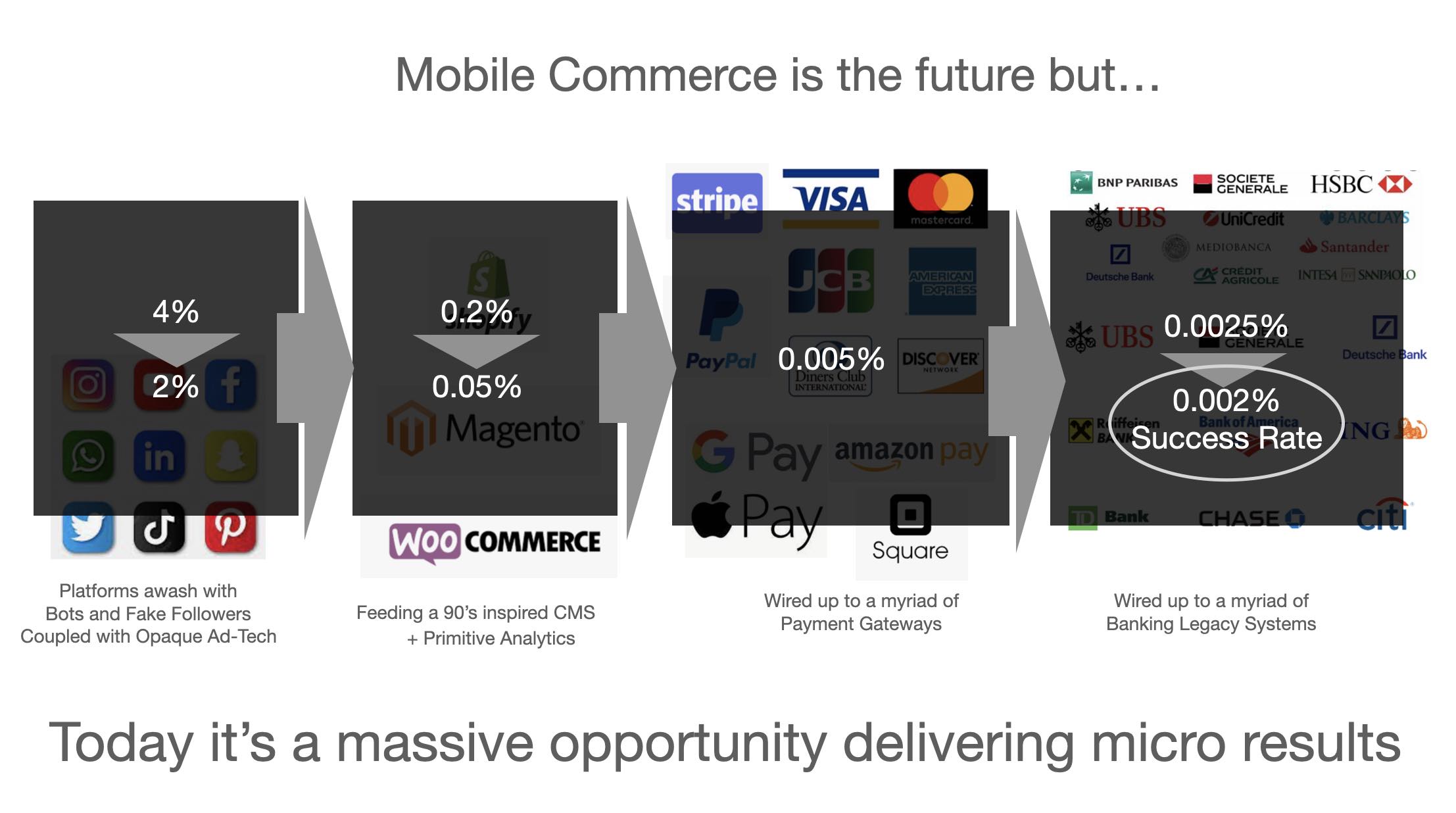
But capitalising on the opportunity isn't without its challenges
So why is it so hard to achieve?
Well to win this game you have to fundamentally invert the sales funnel
You need to prequalify the buyer and seller before they seek to transact
and you can only do this by redesigning the UX and UI from the ground up
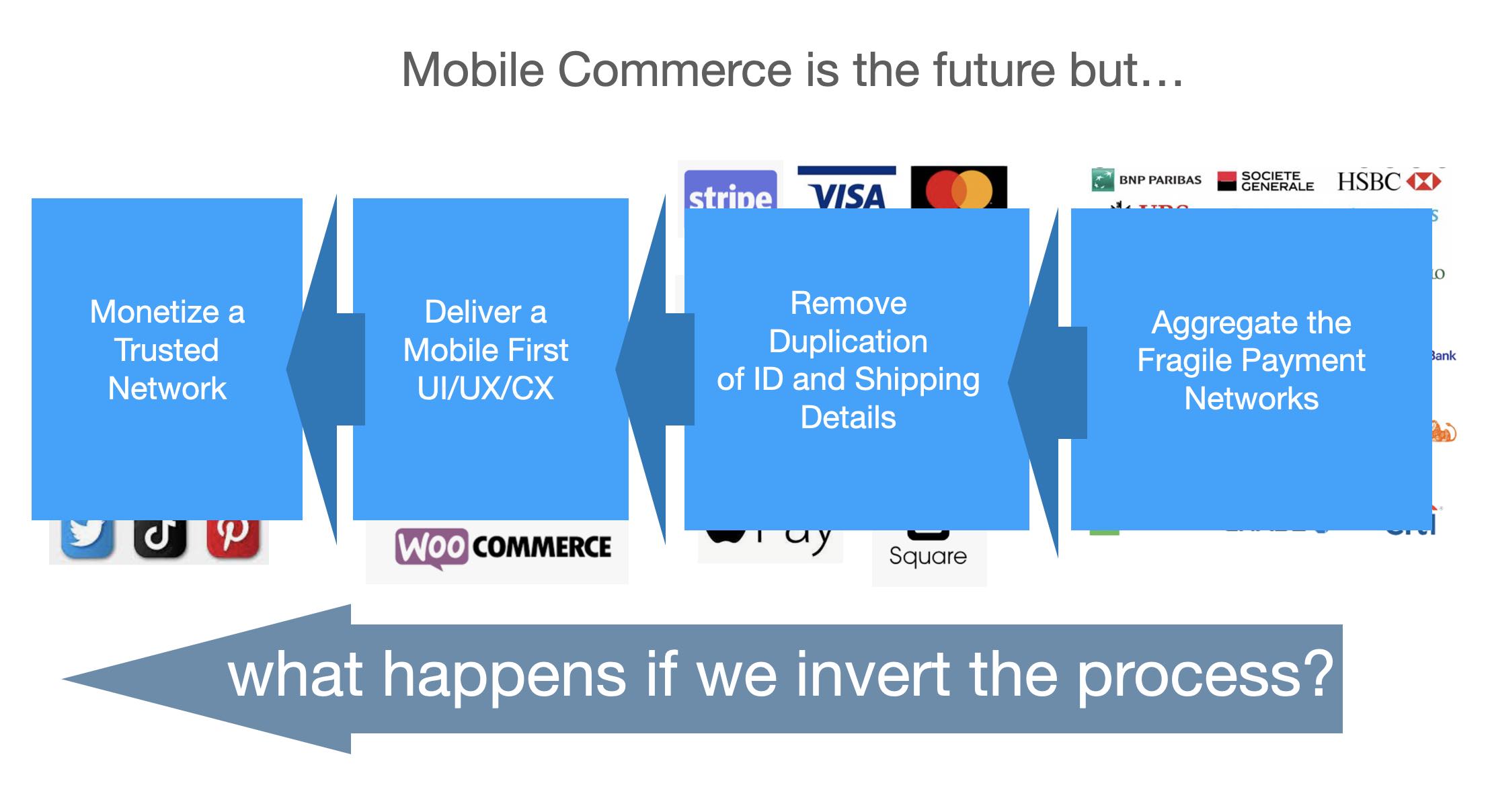
But this raises the obvious question: Why make the change?
or, more accurately why haven't things changed before?
In truth the cheap low hanging fruit in eCommerce hasn't (and perhaps still doesn't) justified the investment
And this is what the Web3 metacryptomaximalists fail to grasp
Despite its obvious inefficiencies. Despite the fragility. Making money via eCommerce is still relatively easy and the technology backbone it operates on remains relatively primitive
Basically the eCommerce arbitrage works for most, if not all, the players in the value chain. So where is the incentive to 'reinvent the wheel'?
In truth the world needs to move beyond the sugar shot delusion before it will embrace Web3 commerce
So what is the sugar shot delusion?
The killer app of Web 1.0 was Search. Telephone Directories 2.0
It began with Yahoo. It morphed into Google. But what most of us now think of as a revelation - a new way of doing business - was in fact merely a continuum
The Yellow Pages morphed into Google
So it is less a story of digital disruption and more a story of just how much the incumbent (ie the Telcos) got it wrong
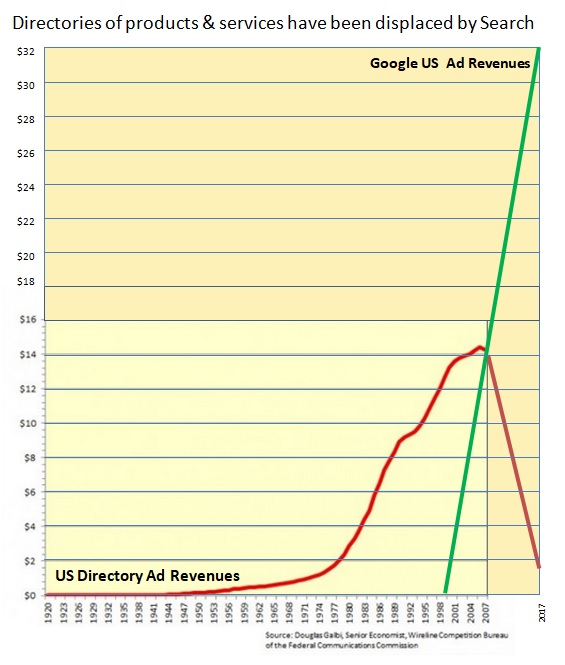
This same principle applies to eCommerce itself
The market for Direct Mail Catalogues Sales was already growing quickly before eCommerce came along in the 1990's
The most popular being media products now offered as Audio and VoD streaming services (e.g. Blockbuster and Netflix) and books (e.g. Amazon)

The killer app of Web 2.0 was Facebook. Social media. Direct Mail 2.0
Again this wasn't a story of digital innovation. It's a story about just how much the incumbent (ie UPS) got it wrong
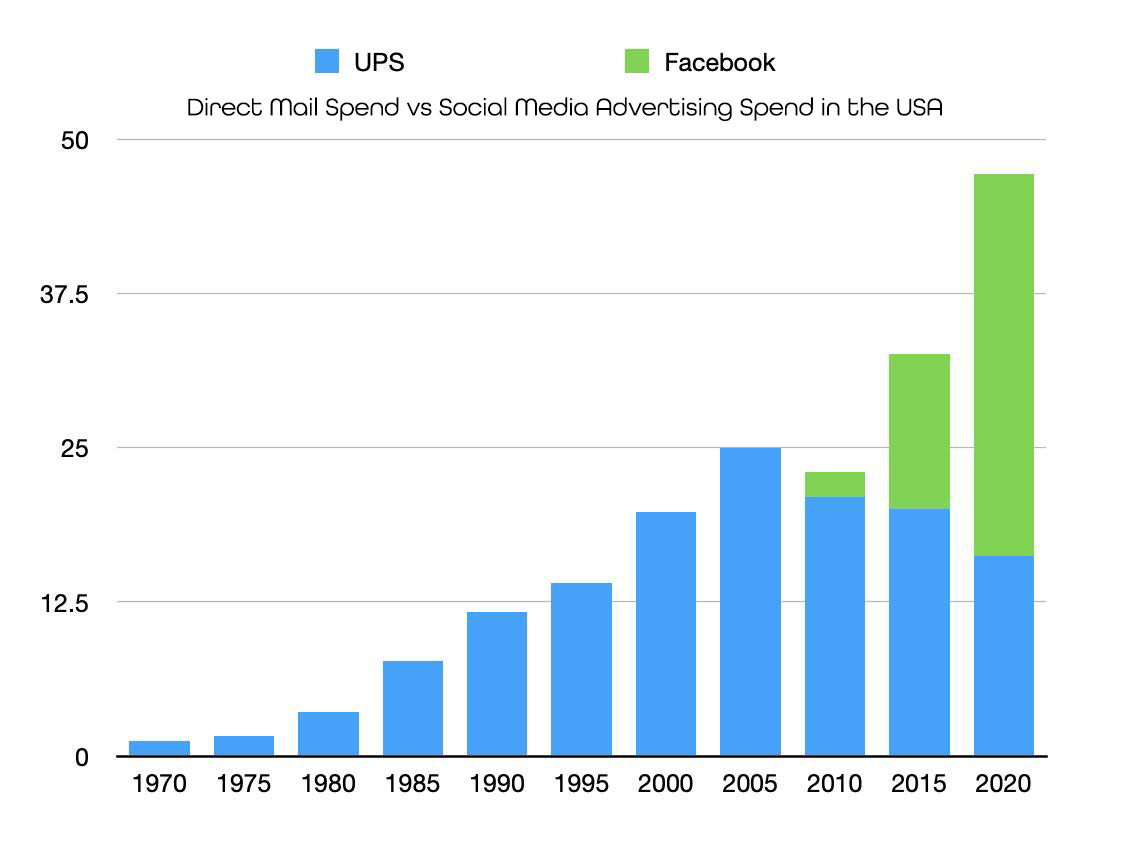
In all 3 cases the money was already going there. It was just a case of who captured the market's spend in the transition from paper to digital distribution
The strategic question we need to ask of Web 3 is where is the money being spent today? And how does digital fundamentally transform the market's way of thinking about where that money should be spent in the future
Understand this and you'll see the design challenge is merely one of reshaping market behaviour rather than inventing new ground breaking database technologies
The clue to addressing this challenge can be found here
This chart documents the relative spend on digital advertising against eCommerce sales in the USA since the emegence of Facebook and the focus on social media
As you can see the price of influence and the aggregation of the free has been steadly eating into the margins
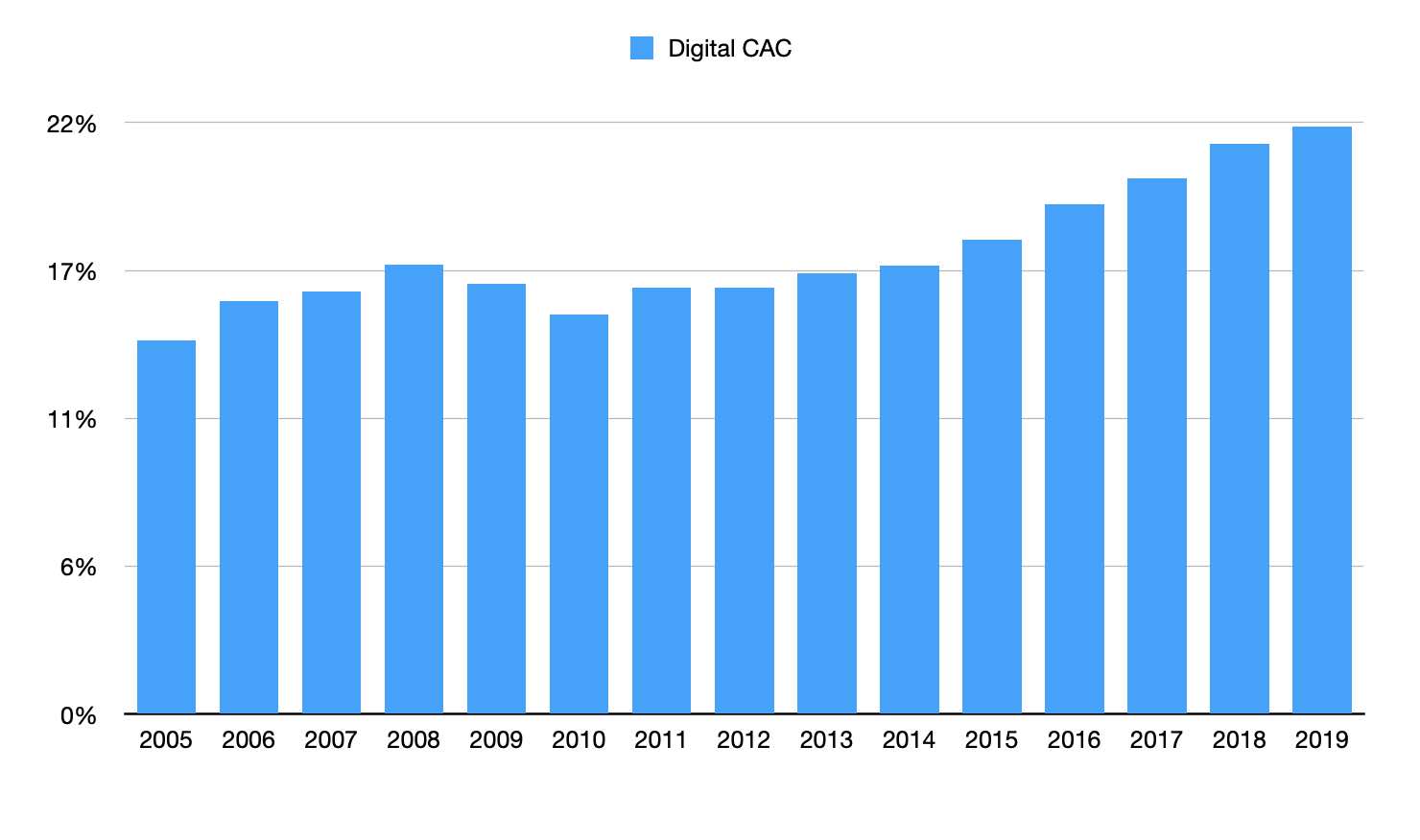
Today the Web 2.0 Mobile Commerce sales funnel is based on the idea that algorithmic growth is linear
The more money you pour into the funnel the more sales you can distil from the traffic the algorithm generates
In truth Google and Facebook CAC will always go up. You cannot game the algorithm and what ever you pay in year 1 will increase exponentially in years 2 and 3
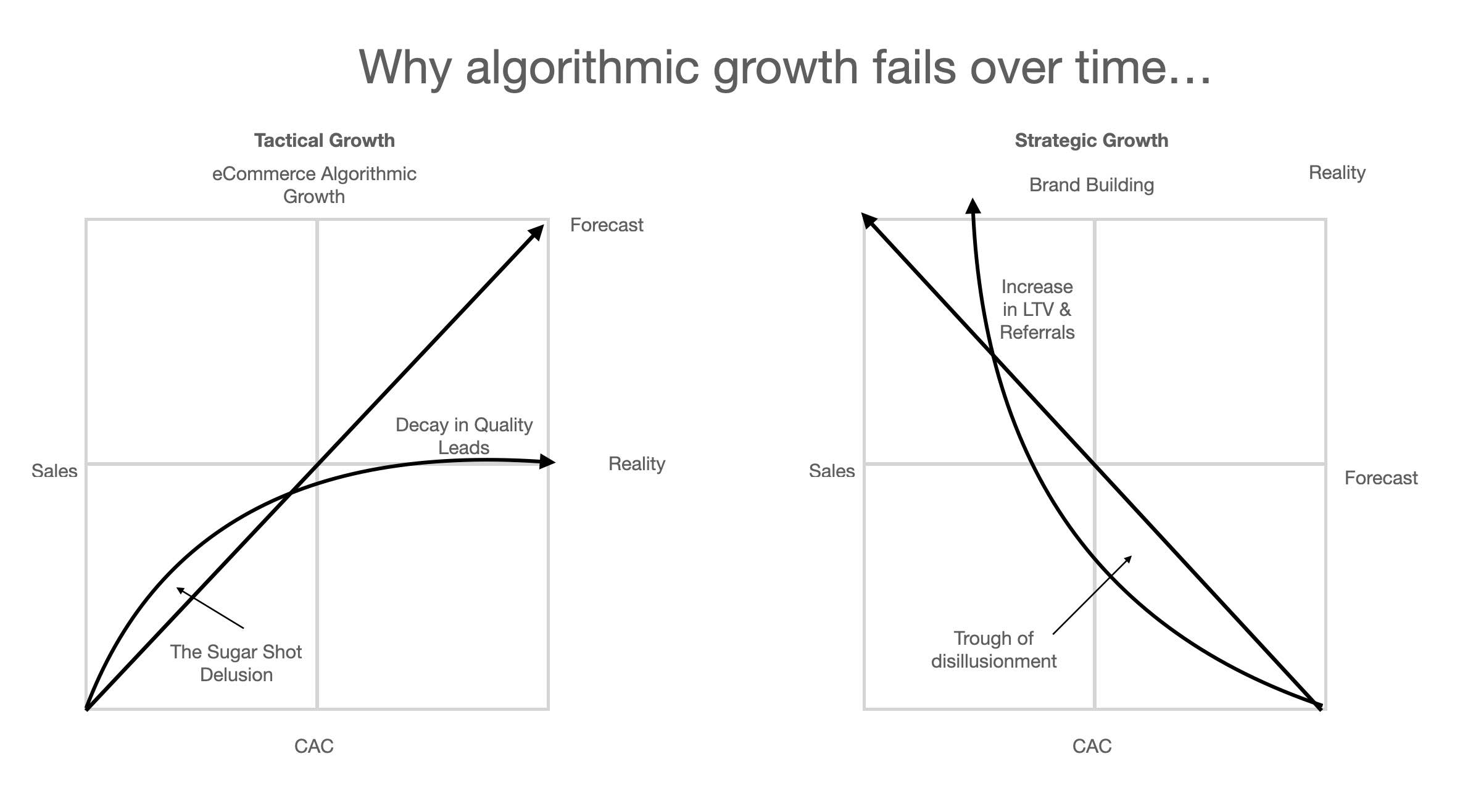
The same principle applies to all the marketplaces. No matter if you are selling Freelance Design Services, Electronic Gadgets or a Bikini
The future cost of leasing your brand on Google, Amazon, Facebook or Fiverr is enormous
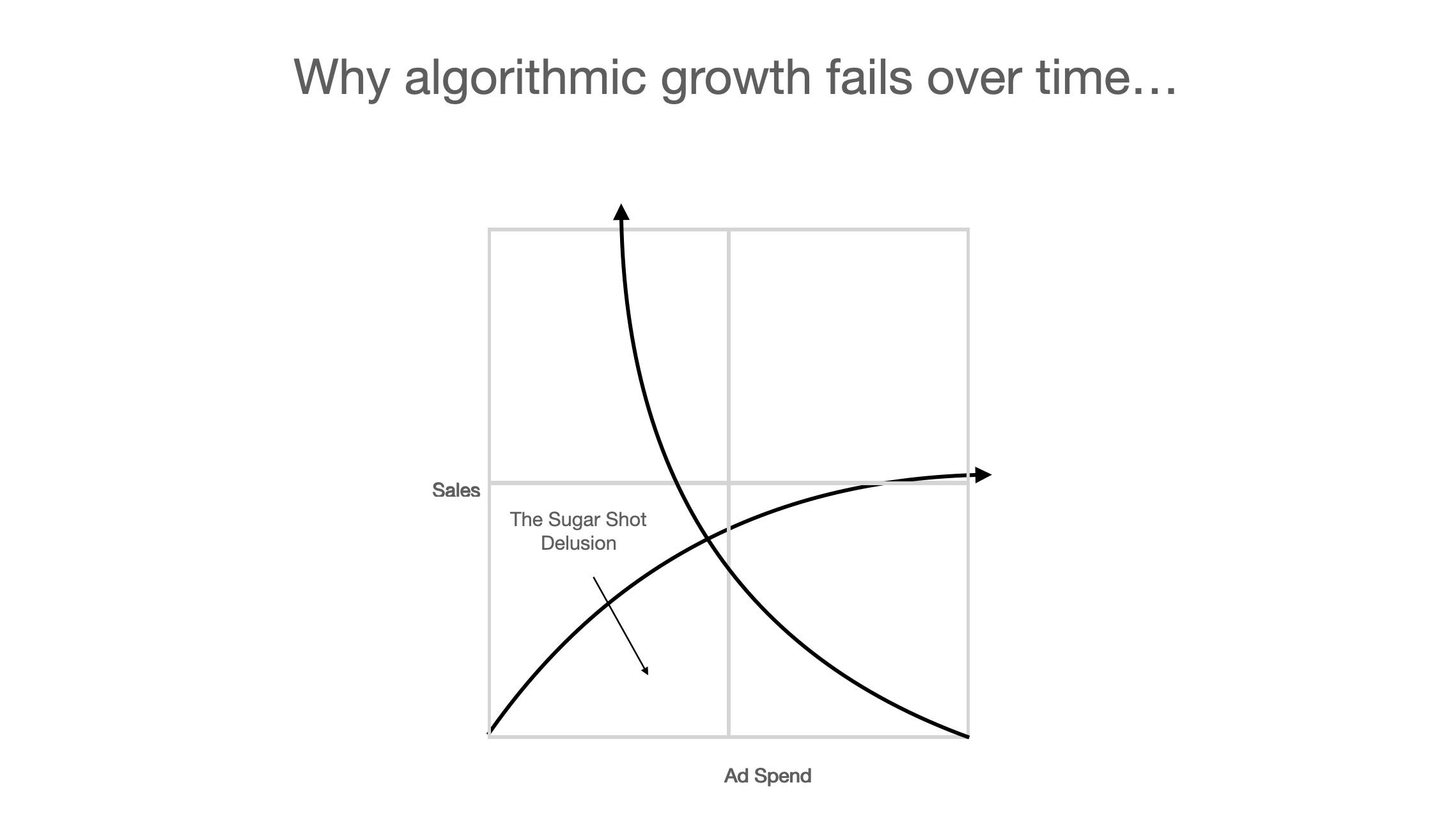
But in reality digital brands are addicted to the sugar shot of algorithmic traffic
To kick the "quick wins" addiction requires a mature marketing strategy
One designed to facilitate the transition from digital ignition to multi channel growth
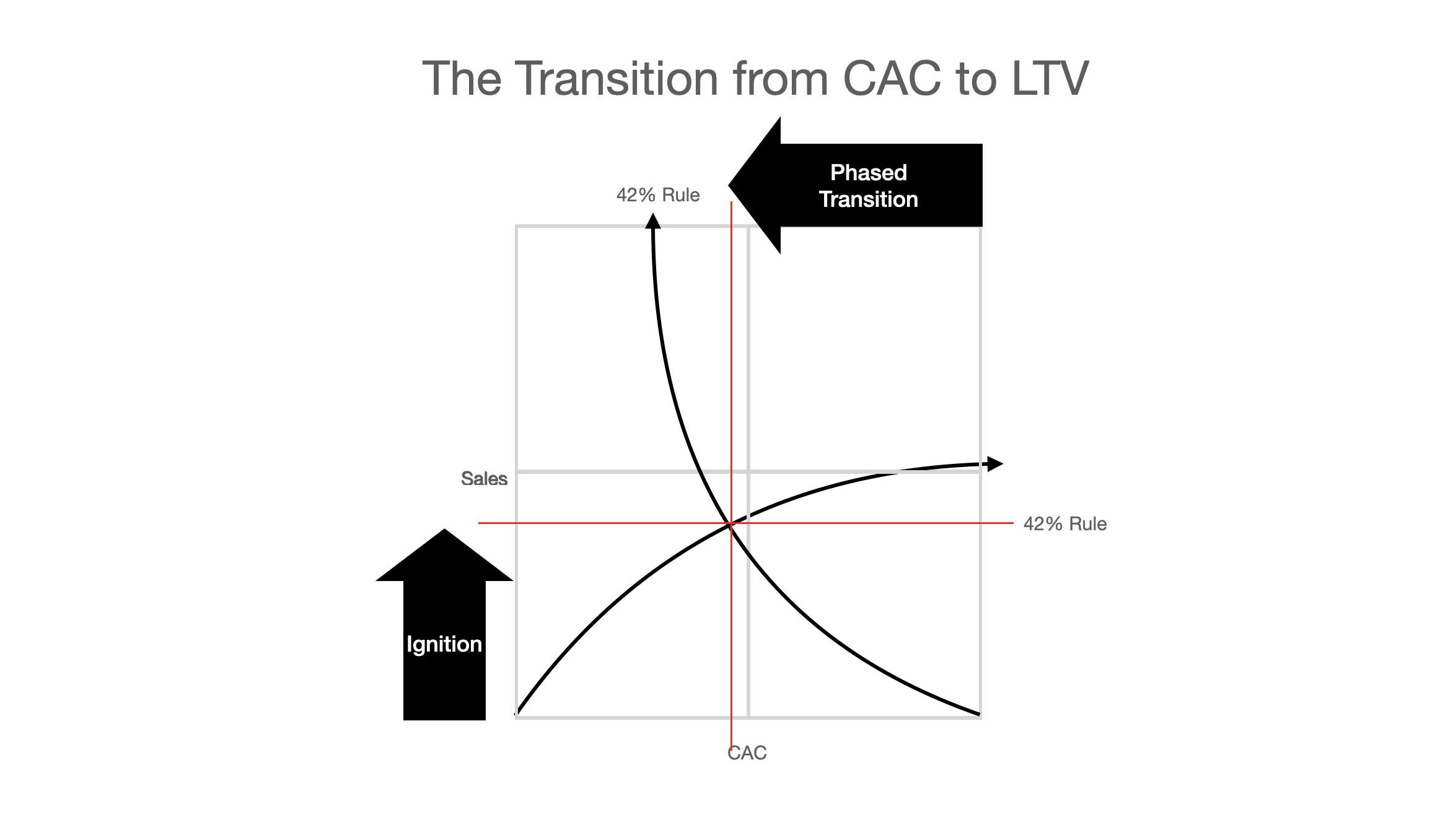
For Web3 Commerce to deliver the next generation of digital commerce it must allow brands to build out their multi-channel capacity beyond the dopamine arbitrage of the sugar shot commerce model
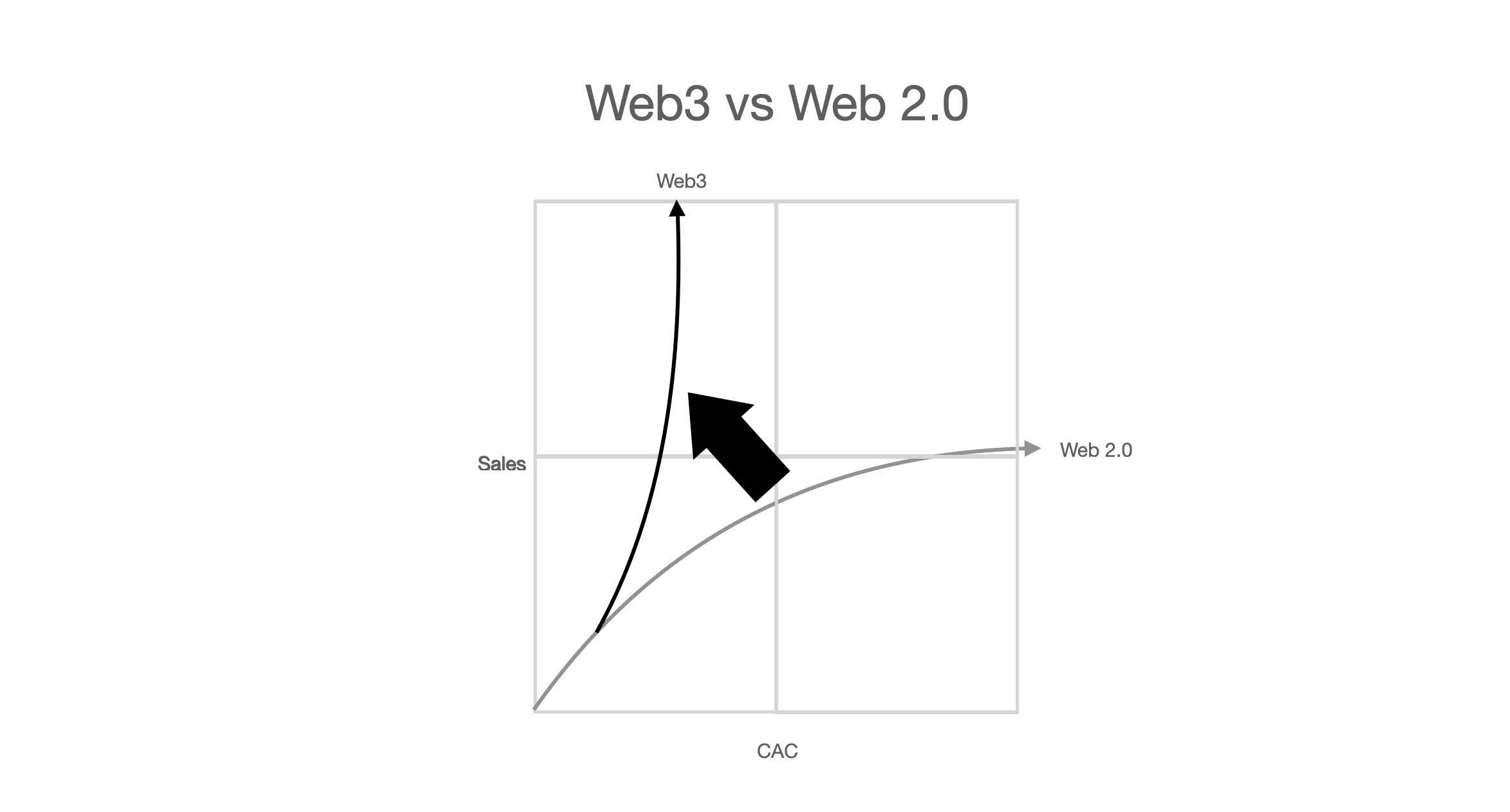
This then is the vision for the PromiseWallet
A new way of transacting business in the world of Web3
A potential use case for the mystical metacryptoverse that prominent VCs and their Crypto Fan Bros have failed to imagine... let alone fully articulate